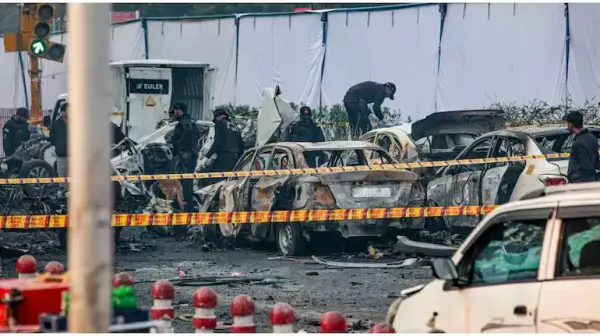As voting for Bihar elections ends today, all eyes will be on the counting of votes on November 14. The battle for all 243 seats will once again see a face-off between the ruling National Democratic Alliance (NDA) led by BJP and JD(U) and the opposition Mahagathbandhan (Grand Alliance) led by Congress and RJD, marking another chapter in the State’s shifting coalition politics.
Also Read- Bihar Exit Poll Results Highlights
Also Read: What Exit polls predicted in 2015 and 2020?
2005: Bihar went to polls twice in 2005. The February election gave a hung verdict, leading to President’s Rule. The re-election in October brought JD(U)-BJP to power, ending RJD’s long reign. JD(U) won 88 seats and BJP 55, making Nitish Kumar the Chief Minister.
Also Read: Catch all the live updates about exit polls and Bihar elections here
2010: The NDA swept the polls, winning 206 of 243 seats. JD(U) bagged 115 seats and BJP 91. Nitish Kumar returned as Chief Minister but stepped down in 2014 after JD(U)’s poor Lok Sabha performance, paving the way for Jitan Ram Manjhi.
2015: JD(U) joined hands with its former rival RJD and the Congress to form the Mahagathbandhan, which won 178 seats. RJD took 80, JD(U) 71, and Congress 27. Nitish Kumar returned as CM. However, in 2017, he ended the alliance over corruption charges and rejoined the NDA.
2020: The NDA narrowly retained power. RJD became the single largest party with 75 seats, while BJP won 74 and JD(U) 43. With support from VIP and HAM(S), which secured four seats each, Nitish Kumar became Chief Minister for the seventh time.
He first became Chief Minister in 2000, though for only a week. His second term began in 2005, and since then, he has served seven terms, making him the longest-serving CM in Bihar. Known for switching alliances multiple times, Kumar has remained central to Bihar’s politics since 2005, maintaining his position through both NDA and Mahagathbandhan alliances.
The shift established BJP as the stronger partner within the NDA, reducing JD(U)’s influence and pushing it to the third position in the 2020 polls. For the 2025 elections, both parties are contesting an equal number of seats, signalling a recalibration of power within the alliance.
Voter turnout and participation
Bihar recorded its highest voter turnout of 62.6% in the 2000 assembly elections. However, turnout dropped below 50% during the two elections held in 2005 amid political instability. The participation rate rose again in subsequent polls, touching 57.1% in 2020. Another significant trend has been the growing participation of women voters, which has seen a steady increase over the last two elections, reflecting gradual social and political shifts in the State.
Also Read- Bihar Exit Poll Results Highlights
Bihar elections 2025
Over the past 20 years, Bihar’s politics has witnessed major shifts in voter preference, caste equations, and party alliances. The Mahagathbandhan, led by RJD’s Tejashwi Yadav, faces internal divisions this time, with reports of direct contests among its own partners on 11 seats. RJD and Congress are also contesting against each other in six constituencies, Congress and CPI in four, and the Vikassheel Insaan Party (VIP) is taking on RJD in Chainpur. On the other side, JD(U) continues its alliance with the BJP-led NDA.Also Read: What Exit polls predicted in 2015 and 2020?
How Bihar has voted in the last 20 years
2000: The election resulted in a hung assembly. RJD became the single largest party with 124 seats but fell short of a majority. Nitish Kumar, supported by the BJP as the leader of the Samata Party, briefly became Chief Minister before resigning after seven days. Rabri Devi later proved her majority with Congress and Left support. After Jharkhand’s separation from Bihar in November 2000, the assembly strength was reduced to 243.2005: Bihar went to polls twice in 2005. The February election gave a hung verdict, leading to President’s Rule. The re-election in October brought JD(U)-BJP to power, ending RJD’s long reign. JD(U) won 88 seats and BJP 55, making Nitish Kumar the Chief Minister.
Also Read: Catch all the live updates about exit polls and Bihar elections here
2010: The NDA swept the polls, winning 206 of 243 seats. JD(U) bagged 115 seats and BJP 91. Nitish Kumar returned as Chief Minister but stepped down in 2014 after JD(U)’s poor Lok Sabha performance, paving the way for Jitan Ram Manjhi.
2015: JD(U) joined hands with its former rival RJD and the Congress to form the Mahagathbandhan, which won 178 seats. RJD took 80, JD(U) 71, and Congress 27. Nitish Kumar returned as CM. However, in 2017, he ended the alliance over corruption charges and rejoined the NDA.
2020: The NDA narrowly retained power. RJD became the single largest party with 75 seats, while BJP won 74 and JD(U) 43. With support from VIP and HAM(S), which secured four seats each, Nitish Kumar became Chief Minister for the seventh time.
Nitish Kumar’s political journey
Nitish Kumar entered the Bihar Assembly in 1985 as a Janata Dal MLA and initially supported Lalu Prasad’s leadership. However, in 1994, he joined hands with George Fernandes to form the Samata Party after a split within Janata Dal. By 1996, he had allied with the BJP.He first became Chief Minister in 2000, though for only a week. His second term began in 2005, and since then, he has served seven terms, making him the longest-serving CM in Bihar. Known for switching alliances multiple times, Kumar has remained central to Bihar’s politics since 2005, maintaining his position through both NDA and Mahagathbandhan alliances.
BJP’s rise and JD(U)’s decline
JD(U)’s dominance in the 2005 and 2010 elections marked its peak, winning 88 and 115 seats respectively. However, the 2015 election saw its decline to 71 seats despite being part of a victorious alliance. By 2020, JD(U)’s strength fell further to 43 seats, while BJP’s tally rose to 74.The shift established BJP as the stronger partner within the NDA, reducing JD(U)’s influence and pushing it to the third position in the 2020 polls. For the 2025 elections, both parties are contesting an equal number of seats, signalling a recalibration of power within the alliance.








